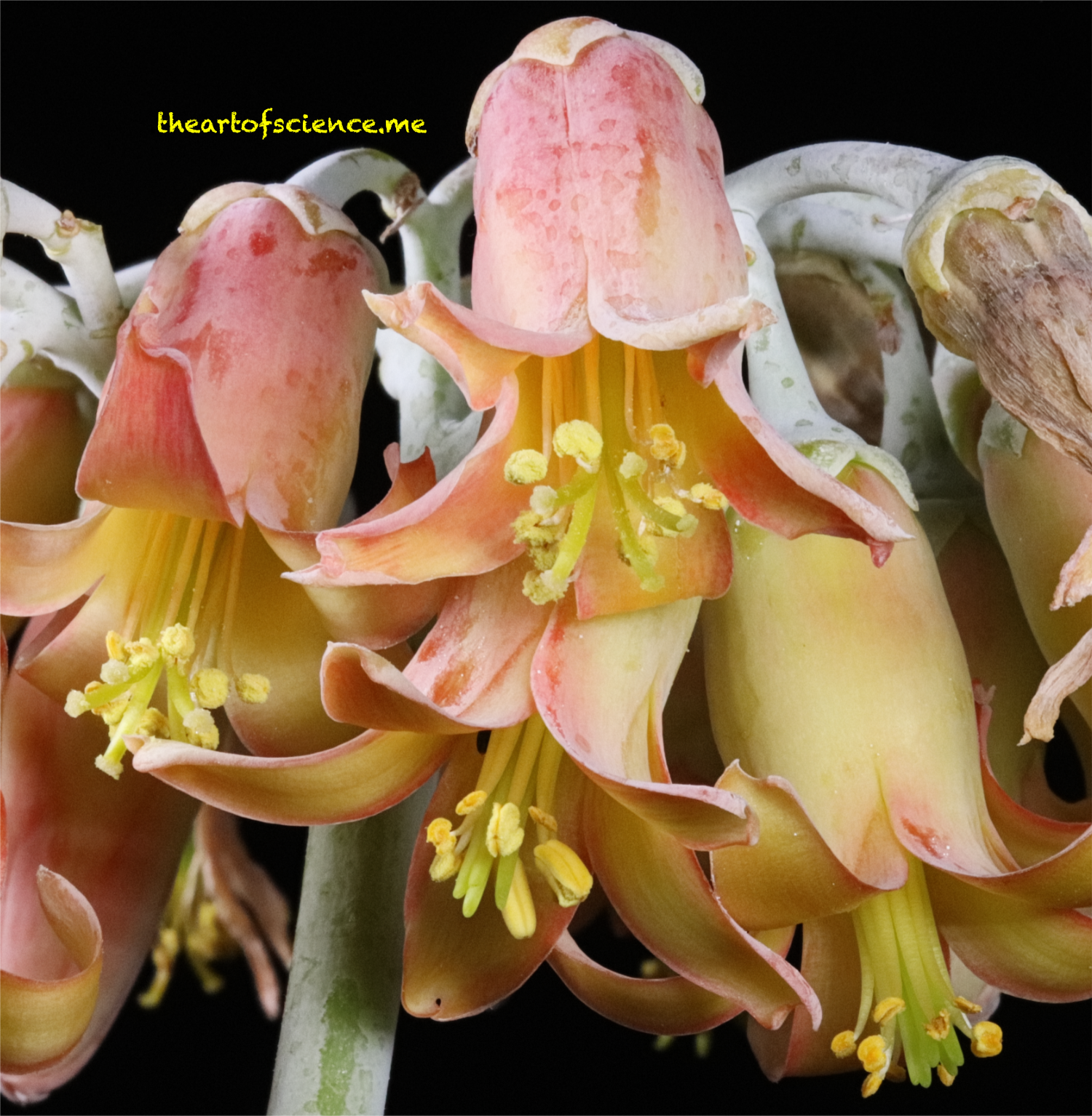Cotyledon flowers.
Sunbleached and weatherbeaten.
With subdued colours and a dusty coating this plant would be a bargain in a second-hand shop. The substantial stem and fat podgy flowers are covered with a grey dust (farina), that helps conserve water by reflecting light. Wikipedia.
The flower bottom centre.
Pale green pistils mature slowly as they extend beyond a ring of anthers. An anther is dehiscing, splitting open to release pollen.
Nature loves a chemistry toolkit, flavonoids.
Farina consists largely of crystals belonging to a class of compounds known as flavonoids. These compounds are secreted by specialised glandular hairs.
Flavonoids perform essential plant functions. The function changes every time new bits are added or the framework is altered. The numbers on the toolbox graphic define where specialised molecular attachments are situated on the flavonoids skeleton.
Flavan-3-ol indicates that an alcohol group is attached to the third carbon atom. It gets quite complicated after that but you get the idea. Flavanols and flavonols have slightly different structures and uses.
Chemists are isolated in their passion for atoms molecules and ions. They often present as uncommunicative and weird. They don’t have many friends.
Later.
Anthers are fully open with pollen pointing away from stigma.
Five stigma projecting above the anthers.
Different Stages.
One of the anthers, bottom centre, is splitting open along a line of weakness. (dehiscing). Anthers turn inside out when they release their pollen grains.
Heavy duty, industrial strength sepals protect the inner flower.
The inner reproductive organs are waiting patiently to spring into action.
Anthers will split open along feint line of weakness before releasing their load of pollen grains.












